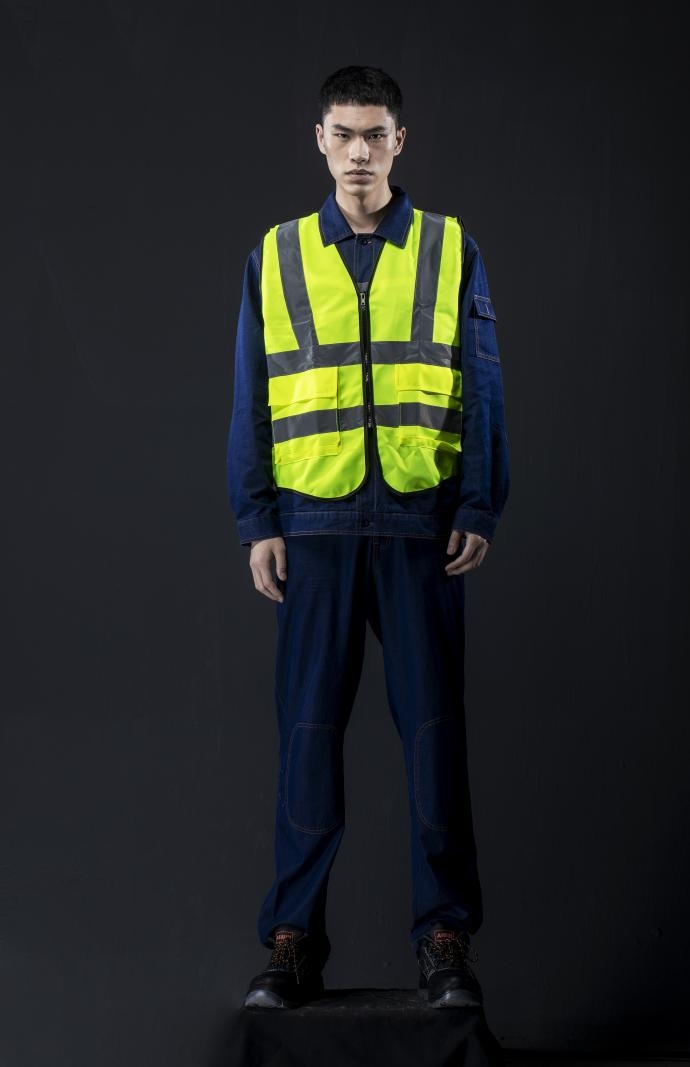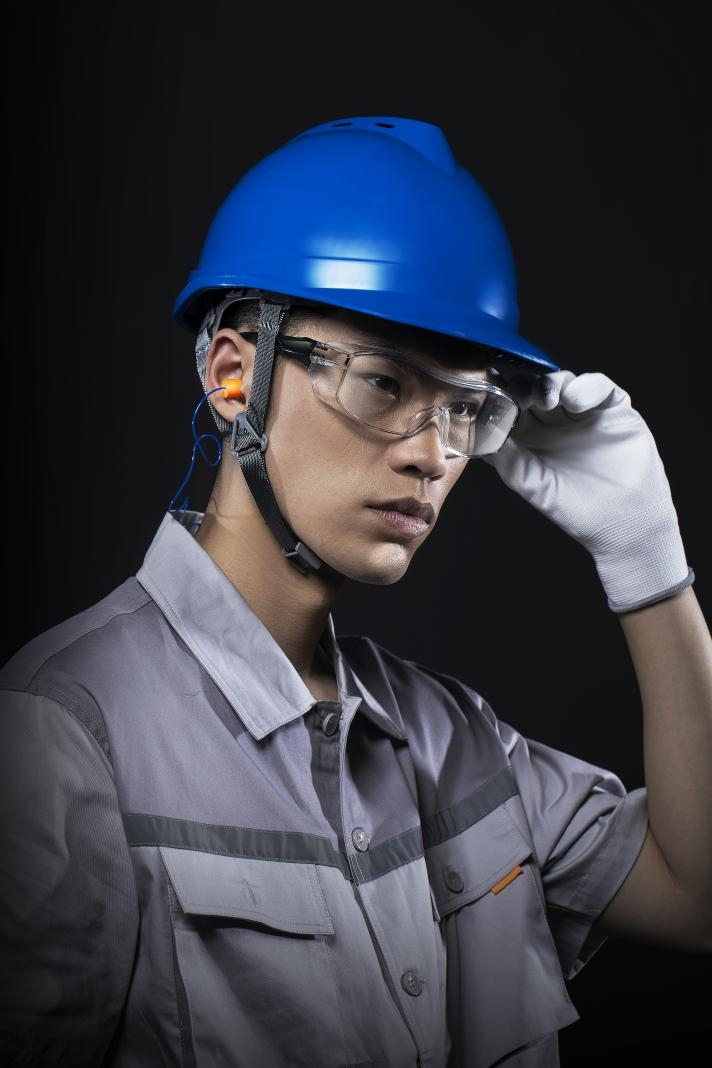Building a Secure Future: The Importance of Safety Equipment in Construction
In the dynamic realm of construction, where progress and innovation shape skylines, ensuring the safety of workers stands as a paramount concern. The importance of safety in construction cannot be overstated, and at the forefront of this commitment is Andanda—an innovative workplace safety solution provider. Specializing in PPE design, research and development, and production, Andanda delivers a comprehensive range of safety equipment, including helmets, goggles, earplugs, gloves, safety shoes, and protective clothing. Anchored by a professional R&D team and bolstered by a CNAS certification laboratory, Andanda remains dedicated to advancing core technologies that elevate safety standards in the construction industry, promising a secure and resilient future for all who build our world.
The Current State of Construction Safety
Statistics on Construction Accidents and Injuries
The construction industry, vital for economic growth, confronts a sobering reality: a concerning number of fatalities. In 2022, the sector reported 1,056 fatalities, marking an 11.0-percent increase from the previous year. This alarming statistic emphasizes the inherent risks of construction work and underscores the pressing need for enhanced safety measures. Moreover, OSHA reported nearly 2.3 million non-fatal injuries and illnesses among construction workers in the same year, shedding light on the widespread nature of safety concerns.
Common Hazards in Construction
Construction sites are rife with potential hazards, ranging from falls and machinery accidents to exposure to hazardous substances. These hazards pose significant risks to workers’ well-being and demand a comprehensive understanding and mitigation strategy to ensure a secure work environment.
Regulatory Frameworks and Standards
In response to the industry’s risks, regulatory bodies have established stringent frameworks and standards. Organizations like OSHA play a pivotal role in setting guidelines to safeguard construction workers. Adhering to these regulatory frameworks is a legal obligation and a fundamental step in prioritizing safety within the construction industry, mitigating risks, and fostering a secure working environment for all.
Role of Safety Equipment in Construction
Definition and Types of Safety Equipment
Safety equipment encompasses a diverse range of tools designed to protect construction workers from potential hazards. This includes personal protective equipment (PPE) such as helmets, gloves, safety glasses, ear protection, and harnesses. Understanding the specific functions of each type is crucial for implementing effective safety measures.


Examples of Safety Equipment
Helmets, serving as a frontline defense against head injuries, stand as a quintessential piece of safety equipment. Gloves shield hands from cuts and abrasions, while harnesses provide fall protection. Safety glasses and ear protection further contribute to safeguarding workers from site-specific risks. Examining these examples illustrates the diverse array of safety equipment necessary for comprehensive protection.
How Safety Equipment Mitigates Risks and Enhances Worker Protection
Safety equipment plays a pivotal role in mitigating risks by creating a barrier between workers and potential hazards. Helmets absorb impact, gloves provide tactile protection, and harnesses prevent falls. The collective use of safety equipment enhances overall worker protection, ensuring that individuals are equipped to confront the challenges of construction work while minimizing the likelihood of accidents and injuries.
Legal and Regulatory Compliance
OSHA Regulations and Standards
The Occupational Safety and Health Administration (OSHA) establishes the benchmark for safety regulations within the construction industry. Covering a wide spectrum of safety measures, from fall protection to hazard communication, OSHA’s comprehensive guidelines are paramount. It is imperative for construction companies to comprehend and adhere to OSHA regulations to establish and sustain a secure working environment.
Other Pertinent Safety Guidelines and Requirements
Beyond OSHA, various regulatory bodies and industry-specific organizations contribute additional safety guidelines. These may encompass standards set by the American National Standards Institute (ANSI), National Fire Protection Association (NFPA), and others. Recognizing and integrating these diverse guidelines is crucial for a comprehensive approach to safety compliance.
Ramifications of Non-compliance
Failure to comply with safety regulations carries substantial consequences for construction firms. Penalties, fines, and legal actions may result from falling short of OSHA standards. Beyond financial implications, non-compliance jeopardizes the well-being of workers, tarnishes a company’s reputation, and could lead to project delays or shutdowns. Understanding and actively adhering to safety regulations are not merely legal obligations but pivotal steps in ensuring the welfare of workers and upholding the integrity of construction operations.
Implementation Strategies
Training Programs for Workers on Proper Equipment Usage
Establishing robust training programs is essential to ensure that construction workers are well-versed in the correct usage of safety equipment. Comprehensive training sessions should cover the proper application, adjustment, and maintenance of helmets, harnesses, gloves, and other protective gear. This empowers workers with the knowledge needed to maximize the effectiveness of safety equipment.
Regular Equipment Inspections and Maintenance
Periodic inspections and proactive maintenance routines are critical components of a successful safety strategy. Regularly checking and maintaining safety equipment, such as inspecting harnesses for wear or helmets for damage, helps identify potential issues before they compromise effectiveness. This preventive approach enhances the reliability and longevity of safety gear.
Integrating Safety Protocols Into Construction Projects
Embedding safety protocols into the fabric of construction projects is paramount. This involves incorporating safety considerations into project planning, ensuring that safety measures are seamlessly woven into every phase. By integrating safety protocols into construction projects, companies foster a culture where safety is a fundamental aspect of the workflow, promoting a secure working environment for all.
Cost-Benefit Analysis
Investment in Safety Equipment vs. Potential Costs of Accidents
Assessing the financial landscape, it becomes evident that investing in high-quality safety equipment is a prudent strategy. The cost of providing robust safety gear pales in comparison to the potential financial repercussions of accidents. By preventing injuries and mitigating risks, the upfront investment in safety equipment proves to be a sound economic decision.
Long-term Benefits of a Safe Workplace
Beyond immediate financial considerations, fostering a safe workplace yields substantial long-term benefits. Reduced worker injuries lead to increased productivity, lower absenteeism, and improved employee morale. A safe workplace not only safeguards workers but also enhances overall operational efficiency and contributes to the sustained success of the construction enterprise.
Economic Impact on the Construction Industry
The economic ramifications of prioritizing safety reverberate throughout the construction industry. A safer workplace contributes to lower insurance costs, diminished legal liabilities, and a heightened industry reputation. Collectively, these factors positively impact the economic stability and growth potential of the construction sector, making safety investments integral to both individual companies and the industry at large.
Technological Advancements in Construction Safety
Innovations in Safety Equipment Technology
In recent years, there have been significant advancements in safety equipment technology within the construction industry. Traditional safety gear like helmets, gloves, and vests has been enhanced with innovative materials and designs. For example, high-impact-resistant helmets now feature lightweight yet durable materials, providing better protection without compromising comfort. Safety gloves incorporate advanced grip technology, reducing the risk of accidents due to slipping or mishandling of tools. Additionally, vests with integrated sensors can monitor vital signs, alerting workers and supervisors to potential health issues on-site.
Wearable Technology and Its Role in Construction Safety
Wearable technology has revolutionized construction safety by offering real-time monitoring and communication capabilities. Smart helmets with augmented reality displays provide workers with instant access to project plans and hazard alerts, improving situational awareness. GPS-equipped vests enable supervisors to track workers’ locations, ensuring they are in safe zones. Wearable sensors can detect falls or excessive fatigue, triggering immediate assistance. These innovations not only enhance safety but also streamline communication, making construction sites more efficient.
Future Trends in Construction Safety Technology
The future of construction safety technology holds exciting prospects. Drones equipped with cameras and sensors will enable aerial site inspections, identifying potential hazards remotely. Artificial intelligence and machine learning will play a crucial role in predictive safety analytics, helping prevent accidents before they occur. Robotics may take on hazardous tasks, reducing human exposure to danger. Overall, ongoing innovation will continue to transform construction safety, making worksites safer and more productive.
To Sum Up
In the construction sector, the primary concern extends beyond erecting impressive structures; it revolves around ensuring the well-being of the workforce responsible for these remarkable achievements. Safety equipment has emerged as the cornerstone of this unwavering commitment to worker security. Looking ahead, it becomes increasingly evident that embracing technological advancements in safety equipment is of utmost importance. Innovations such as high-impact resistant helmets, intelligent wearables, and predictive analytics are actively shaping the future of construction safety. These breakthroughs not only mitigate risks but also enhance efficiency and productivity on construction sites. As construction technology continually advances, the industry stands on the brink of constructing a more secure and prosperous future. The significance of construction safety equipment goes beyond mere regulatory compliance; it is about safeguarding lives and livelihoods. The adoption of these cutting-edge advancements in construction safety technology serves as a testament to our dedication to forging a safer, more secure, and more prosperous construction industry for the benefit of future generations.

